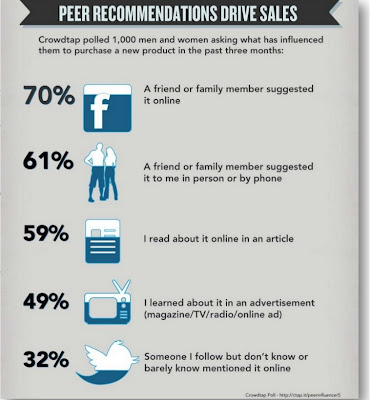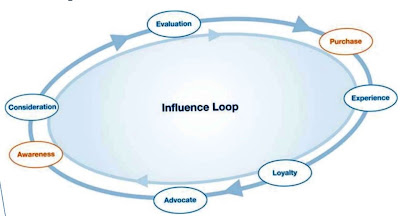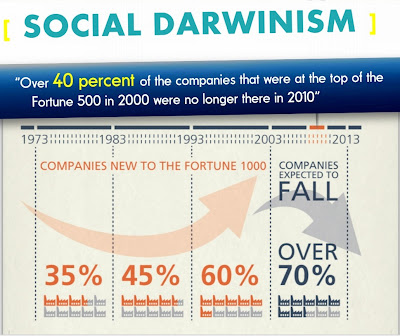
Courtesy of What’s The Future of Business (illustration by Hugh Macleod)
Business as usual isn’t going to cut it anymore. Not with the rise of Generation-C.
According to renowned thinker Brian Solis (love his work!), Gen-C individuals spend an inordinate amount of time online and live a large fraction of their lives accessing information and interacting with others on the Internet.
Armed with smartphones and tablets while viewing other screens, they are also known as Connected Consumers. Most are Gen Ys/ Millennials (ie 18 to 34 year olds) or Gen Zs/ Post Millennials (born in the 2000s).
In a freshly minted set of slides drawn from his new book What’s The Future of Business, Solis highlights the following fascinating facts:
– Gen Ys will form 75% of the workforce by 2025. However, only 11% of Gen Ys define having a lot of money as success;
– Watching TV with two or more electronic devices, these relentless multi-screeners trust strangers overs friends and family;
– Gen Ys rely on user-generated experiences to influence purchase decisions. They believe that other consumers care more about their opinions than companies do;
– They are three times more likely to follow a brand compared to a family member in social networks. 66% will look up a store if they see a friend check in, while 73% have earned and used virtual currency;
– With a social graph of 696 Facebook friends, they’re far more connected that the measly 140 maintained by everyday people.
Spending a huge chunk of their time on social networks, these connected consumers naturally draw their information and interests from peers. This also means that their decision to purchase is highly influenced by their friends or family members.
Just look at the chart below:

Courtesy of What’s The Future of Business
Against this backdrop, what can companies do?
Here, Brian suggests a couple of things.
The first is to identify what your Moments Of Truth are. Out of the 4 moments of truth, two in particular stand out, namely:
1) The Zero Moment of Truth (ZMOT): This is defined by two significant encounters. The first occurs at the store shelf, when a consumer decides whether to buy one brand or another. The second occurs at home, when he or she uses the brand – and is delighted or not.
2) The Ultimate Moment of Truth (UMOT): the experience that people share after using your product and engaging with your company over time. These are usually manifested in blog posts, YouTube videos, reviews on forums, Facebook posts, and other platforms. They direct people to take their next steps accordingly.
To score on both the ZMOT and UMOT fronts, ensure that every aspect of the User Experience is sweet and aligned to your brand promise – from pre-purchase, purchase, evaluation, and after sales. In fact, consider how you design and choreograph the entire user experience across the entire Influence Loop.
The various components of the influence loop can be seen in the diagram below:
.jpg)
Courtesy of What’s The Future of Business
As a strong advocate for customer experience management, I firmly support Solis’ view on this.
Quoting from his slides:
“User Experience is key. To connected customers, experience is everything. It isn’t just about buying products or surfing sites. It is about experiences – what they buy, what they embrace, what they share… User experiences are interwoven with absorbing visual design packaged in a journey rich with empathy and desire.”
In order to trigger positive experiences, generate influence and stimulate peer recommendation, Solis further advises businesses to heed the six pillars of social commerce. These are summarised as follows:
1) Social Proof – Being accepted by the crowd and triggering acceptance;
2) Authority – Providing a guiding light to consumers;
3) Scarcity – Finding valuable niches that customers would value;
4) Liking – Build bonds and trust by increasing your likeability factor;
5) Consistency – Being dependable, trustworthy, and transparent with integrity;
6) Reciprocity – Encouraging others and oneself to pay it forward.
(More info on social commerce here.)
Looking at how my younger friends and relatives behave, I totally agree with Brian’s astute observation on where the future of business will lie. Companies need to remodel their processes moving away from an “us”-focused model to a “them”-focused one.
Obviously, this isn’t just about having a Facebook page, starting a YouTube channel, or reaching out to celebrity bloggers. Rather, it entails the radical transformation of one’s business: how products and services are designed and distributed; how customer experiences are curated; how information is seeded and spread; to how relationships and interactions on social channels are forged.
In Brian’s words, “connected consumerism is the new reality. Businesses that don’t disrupt their own markets will find their markets disrupted for them.” In fact, failure to do so may lead to corporate ruin and disaster. Termed “Social Darwinism” by Brian, this trend has unfolded repeatedly throughout history as seen in the chart below:
.jpg)
Courtesy of What’s The Future of Business
I’m certainly looking forward to picking up a copy of Brian’s Book: What’s the Future of Business: Changing the Way Businesses Create Experiences. Suggest that you do too!
